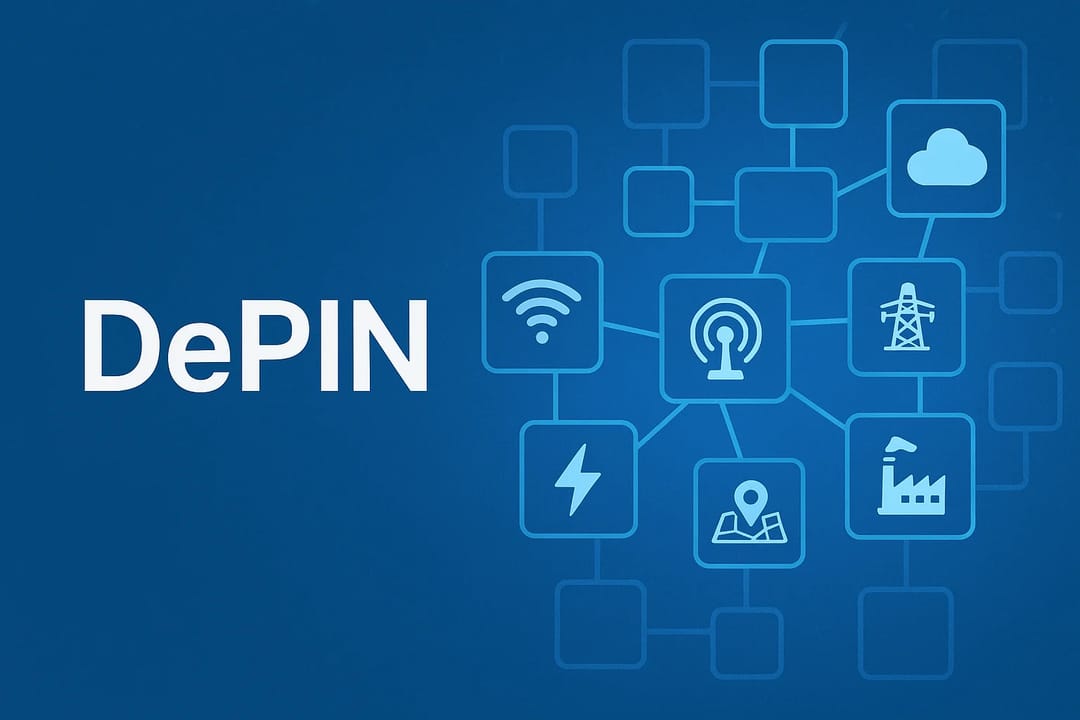If you’ve noticed more chatter about “DePIN” lately, you’re not imagining it. Decentralized Physical Infrastructure Networks are bringing blockchains off the screen and into the real world—powering wireless coverage, mapping, compute, and sensor networks with open incentives instead of centralized ownership. Here’s a clear, no-hype look at how DePIN works, how projects differ, and what to watch in 2025.
What is DePIN, in plain English?
DePIN uses tokens to coordinate and reward people who contribute real-world resources—think hotspots, dashcams, GPUs, or sensors—into a shared network that anyone can use. Instead of a single company building towers or data centers, thousands of independent operators provide resources and get paid as the network grows. That makes DePIN a bridge between physical systems and crypto incentives, with tangible services (connectivity, compute, data) on the other end for consumers and enterprises to buy Grayscale Research, 2025 and Halborn, 2024.
The moving parts: how DePIN works end-to-end
Hardware supply: Individuals or businesses run devices (routers, cameras, sensors, GPUs) and contribute capacity or data.
Marketplace and demand: Users and enterprises consume services (bandwidth, render jobs, datasets), paying in fiat or crypto.
Blockchain logic: Smart contracts handle payments, rewards, and sometimes staking and slashing.
Proofs and verification: Networks must verify that contributors actually delivered what they claim. Proofs can be on-chain or off-chain (more on that in a second).
Incentives flywheel: As usage grows, token economics can improve, attracting more contributors and expanding service quality/coverage—creating a positive feedback loop Halborn.
Two ways to slice DePIN: PRNs vs. DRNs (and why it matters)
A widely used taxonomy splits DePIN into:
- Physical Resource Networks (PRNs): Location-bound resources—wireless coverage, geospatial data, energy. Examples: Helium (wireless/IoT), Hivemapper (mapping), GEODNET (GNSS). These need geographic density to be useful.
- Digital Resource Networks (DRNs): Location-agnostic resources—compute, storage, bandwidth/CDN. Examples: Render (GPU rendering), Akash (compute), io.net (GPU aggregation). These scale horizontally across the internet.
This distinction helps you reason about rollout, incentives, and network effects: PRNs fight for city-by-city density; DRNs compete on price-performance and reliability for global users Halborn.
Proofs: on-chain vs. off-chain (trust is the real product)
DePIN lives or dies by credible proofs of useful work. A practical framework:
- Data-aggregation DePINs (e.g., environmental sensors, web-scraped or geospatial datasets) often anchor proofs on-chain to create tamper-evident audit trails buyers can independently verify. This supports enterprise audits, regulation, and premium pricing.
- Service-based DePINs (e.g., compute, bandwidth) validate delivery off-chain and settle payments on-chain. If service fails, customers notice in real time—so persistent public proofs offer less marginal trust versus the operational overhead.
Examples: Grass Protocol anchors dataset provenance on-chain; io.net validates most activity off-chain while settling on Solana to keep costs low and throughput high Helius, 2025.
Adoption snapshot (2025)
- Platform gravity: Solana has emerged as a leading chain for DePIN projects by market cap, usage, and adoption—hosting Helium, Render, and Grass among others Grayscale, Feb 2025.
- AI-related DePIN: Projects tied to AI data, compute, and training dominate DePIN by market cap (48%) per the same report.
- Real-world traction: Helium reports 129,000+ mobile subscribers with a low-cost plan, plus a free tier, and enterprise partnerships (e.g., T-Mobile) that pay based on usage; Grayscale estimates Helium has provided wireless access to ~450,000 people and saw usage rise into late 2025. GEODNET’s annualized network fee revenue hit ~$3M in Jan 2025, up ~518% YoY Grayscale.
Takeaway: the “real users for real services” story is no longer theoretical—especially in wireless and AI-adjacent compute/data.
DePIN vs. traditional infrastructure: a quick comparison
Where DePIN shines
- Capital efficiency: Crowdsources capex; reduces corporate overhead.
- Resilience: Fewer single points of failure; geographically distributed nodes.
- Incentive alignment: Contributors are paid directly for verified utility.
- Speed to bootstrap: Tokens can accelerate supply-side growth in greenfield markets.
Where it’s hard
- Quality control: Preventing spoofing, GPS faking, or low-quality work requires robust proof systems and slashing.
- Unit economics: Token rewards must converge to sustainable, service-driven cash flows.
- Compliance: Data provenance and telecom rules differ by region; auditability matters for enterprise deals.
- Volatility: Token price swings can distort incentives if demand isn’t sticky.
Security is a thread through all of this—smart contract risk, hardware tampering, Sybil resistance, and secure client verification all need continuous attention Halborn.
How to evaluate a DePIN project (practitioner’s checklist)
Customer value: What pain does it solve versus centralized alternatives (price, coverage, latency, provenance)?
Proof design: On-chain vs. off-chain, and why. Is it strong enough for the target buyer (consumer vs. enterprise vs. regulator)?
Supply and demand balance: Is there real demand, not just mined rewards? Any paying integrations or enterprise pilots?
Unit economics: Can rewards be funded by usage over time? Clear path from subsidies to sustainable fees?
Hardware realism: What does deployment actually entail (cost, install, maintenance, density requirements)?
Platform choice: Why this L1/L2? Throughput, cost, and reliability matter—many DePINs favor Solana for these reasons Grayscale.
Governance and security: Slashing, dispute resolution, audits, and upgrade paths.
Quick examples, compared
Helium (PRN, wireless/IoT): Crowdsourced hotspots for connectivity; growing mobile subscriber base and telco partnerships Grayscale.
Hivemapper (PRN, mapping): Dashcam-powered map data; token rewards for fresh coverage.
Render (DRN, GPU rendering): Decentralized rendering marketplace for creatives and studios.
io.net (DRN, compute): Aggregates GPUs; off-chain validation with on-chain settlement to scale throughput Helius.
Grass (Data aggregation): On-chain provenance for datasets; enterprise-focused auditability Helius.
Conclusion
DePIN rewires how we build and fund physical networks: from top-down capex to bottom-up participation. The tech is no longer just a narrative—wireless and AI-adjacent networks show meaningful users, partnerships, and revenue signals. The next phase is about trust and sustainability: robust proofs, real customers, and unit economics that stand on their own.
Note: Metrics and examples reflect the linked sources’ latest updates at publication time; always check project dashboards and docs for current figures.

